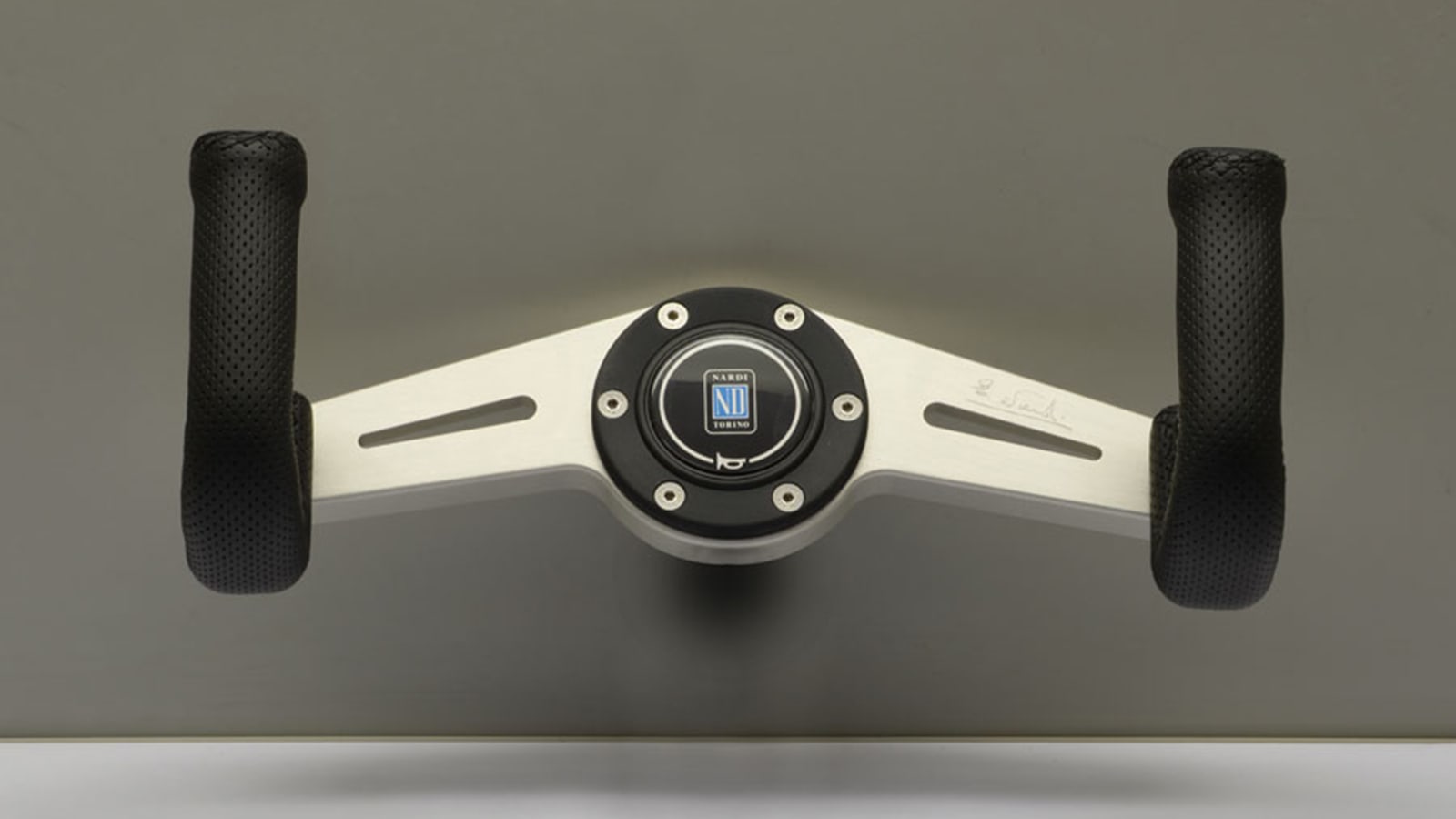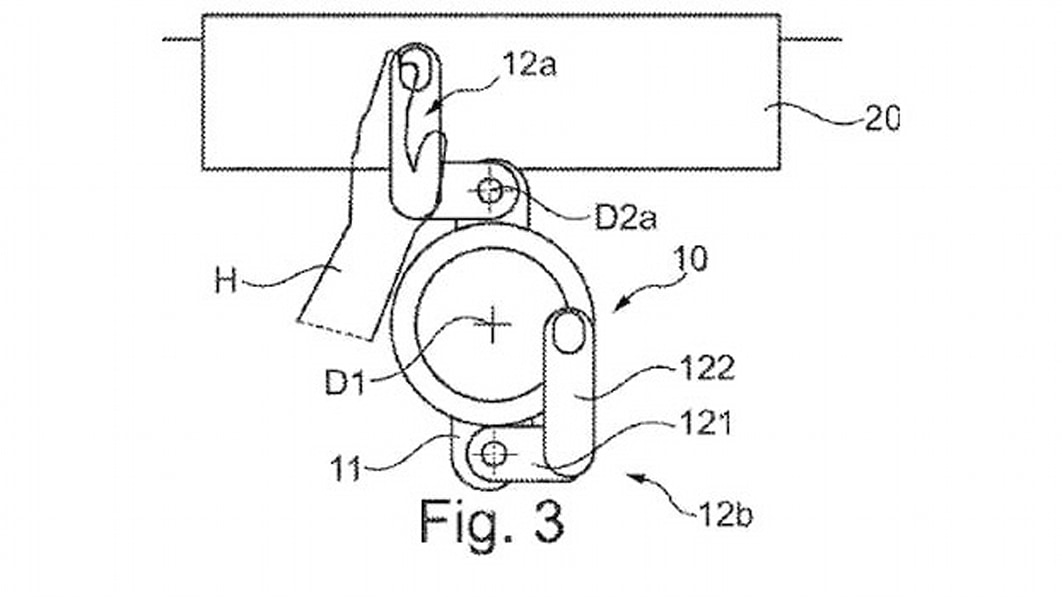BMW has filed a patent application for a new type of steering wheel. The closest word in the English language we have for something like this is “yoke”, but that doesn’t quite describe the full insanity of the design. BMW calls it a tiller handle, but a more accurate description would be something like two levers, making the operator look like he’s using a Stairmaster.
The handlebar grip patent, discovered by Carbuzz, has not only been filed with the US Patent and Trademark Office, but also with its counterparts in Germany and China. They suggest it would be used in some sort of autonomous vehicle, to free up space that would otherwise be occupied by a traditional steering wheel.
The handle appears to consist of two grips that revolve around a fixed central hub. The L-shaped grips of the grips are joined with their lower legs to a ring that encircles the hub, while the upper legs extend vertically, perpendicular from the plane of the hub towards the driver. The ring ensures that the grips are always on either side of the hub. However, as the user operates them, the two grips revolve around the hub and rotate freely like grips.

We’d say this goes a lot further in reinventing the wheel than even the Tesla yoke, which is already terrible, but at least still works like a regular steering wheel. However, this design is similar to an unusual Nardi aftermarket handlebar, the Two Spokes, shown above. It only has two spokes with free-spinning, fighting style handles on each end, so you can keep your grip the same, at least until you have to turn the wheel completely.
We can think of only one good reason for the existence of this tiller handle, and that is possibly as a driving aid for people with disabilities. However, the market already has rotary controls that can be adapted to existing steering wheel designs.
Companies apply for patents for a variety of reasons. Sometimes it’s purely to lay claim to a technology they’ll never use, or to prevent others from coming up with a similar idea. We hope it stays in its conceptual form.
Related video:
